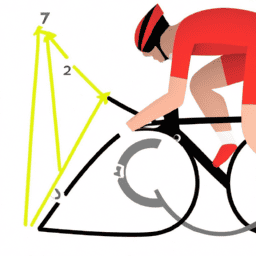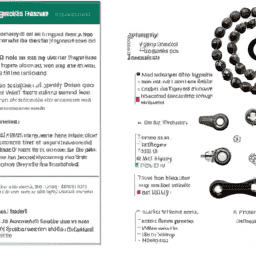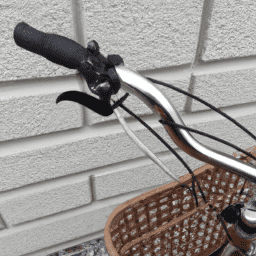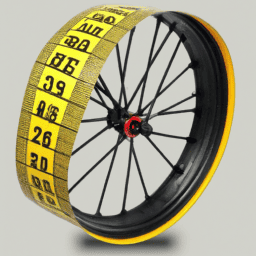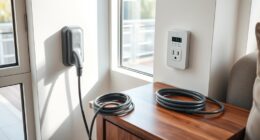As someone passionate about cycling, I’ve come to realize the significant impact a well-adjusted bicycle can have on my cycling experience. Among the key components of fitting a bike correctly is the seat height. Having a seat positioned either too high or too low can lead to discomfort, decreased efficiency in pedaling, and potentially cause injuries. Hence, it’s crucial to grasp the method for finding the perfect seat height for your bicycle.
In this article, I’ll share with you the importance of having the correct seat height, how to determine your ideal seat height, and tips for personalizing your seat height to your riding style. I’ll also provide you with tips for maintaining proper seat height, so you can ride comfortably and safely for years to come.
So, whether you’re a seasoned cyclist or just starting out, let’s dive into the world of seat height and find out how to get the most out of your ride.
Key Takeaways
- Properly adjusting seat height is crucial for achieving bike fit and enhancing cycling experience.
- Determining ideal seat height involves considering inseam length, riding style, and flexibility.
- Consequences of improper seat height include discomfort, reduced power output, and possible injury.
- Reliable method for determining ideal seat height is measuring distance from heel to pedal axle and adding 1cm.
Understand the Importance of Proper Seat Height
You need to understand how important it is to get your seat height just right if you want to avoid discomfort and maximize your cycling performance. The importance of bike fit cannot be overstated, and your seat height plays a crucial role in achieving it.
When your seat is too low, you’ll find yourself pedaling inefficiently and putting unnecessary strain on your knees. On the other hand, if your seat is too high, you’ll feel unstable and have difficulty reaching the pedals. These common seat height mistakes can lead to discomfort, decreased power output, and even injury.
To ensure you have a comfortable and efficient ride, it’s important to determine your ideal seat height. This can be done by considering a variety of factors, including your inseam length, riding style, and flexibility.
By taking the time to properly adjust your seat height, you’ll be able to ride longer and with more power, while also reducing your risk of injury.
Determine Your Ideal Seat Height
To find the best fit for your body, measure the distance from your heel to the pedal axle and add 1cm. This is a reliable method for determining your ideal seat height, as studies have shown that it results in greater pedal efficiency and injury prevention.
A seat that is too low can cause knee pain and limit power output, while a seat that is too high can cause discomfort and reduce control of the bike.
Several factors can affect the height of your bicycle seat. These include your leg length, the type of pedals you use, and the riding position you prefer. It’s important to take these factors into consideration when adjusting your seat height.
The next step is to consider your riding style and make any necessary adjustments to ensure maximum comfort and efficiency on the road.
Consider Your Riding Style
As you envision yourself gracefully soaring down the road on your trusty steed, imagine the type of riding style that best suits your personality and goals. Consider whether you’re a mountain biker who enjoys tackling rough terrain or a road cyclist who prefers cruising on smooth pavement. Your riding style will affect how high your seat should be.
To help you determine the appropriate seat height for your riding style, take a look at the following table. It outlines the recommended seat height range for both mountain biking techniques and road cycling techniques. Keep in mind that these are general guidelines, and you may need to adjust your seat height based on your individual preferences and body measurements.
| Riding Style | Recommended Seat Height Range |
|---|---|
| Mountain Biking Techniques | 83-93% of leg inseam |
| Road Cycling Techniques | 85-95% of leg inseam |
Now that you have a better idea of the appropriate seat height range for your riding style, it’s time to personalize your seat height to your specific needs.
Personalize Your Seat Height
Now’s the time to make your riding experience truly your own by adjusting the seat height to fit your unique needs and preferences. Finding the right seat height can be a balancing act between comfort and efficiency.
A seat that’s too high can cause discomfort and strain in the knees, while a seat that’s too low can lead to decreased power output and slower cycling speed. Here are a few tips to help you personalize your seat height:
- Start with a basic measurement: Sit on your bike with your feet flat on the ground and measure the distance from the ground to your pubic bone. This measurement is a good starting point for setting your seat height.
- Adjust over time: Don’t be afraid to make small adjustments to your seat height over time. As you ride more, you may find that your preferences change and your body adapts to different positions.
- Experiment with different heights: Try adjusting your seat height by small increments and see how it affects your comfort and efficiency. You may find that a slightly higher or lower seat height works better for you.
As you adjust your seat height, keep in mind that maintaining proper seat height is important for preventing injury and maximizing your cycling potential.
In the next section, we’ll discuss some tips for maintaining the proper seat height.
Tips for Maintaining Proper Seat Height
Maintaining the proper height of your saddle is crucial for preventing injuries and enhancing your cycling performance. One of the most common mistakes that riders make is having their saddle too low. This can cause knee pain and limit your pedaling power. On the other hand, having your saddle too high can put unnecessary pressure on your hips and lower back, leading to discomfort and possible injuries.
To avoid these issues, it’s important to regularly check and adjust your saddle height. Here are some tips to help you maintain a proper saddle height:
| Tip | Explanation |
|---|---|
| Use a level | Make sure your saddle is level to ensure proper weight distribution and comfort. |
| Wear your cycling shoes | Your saddle height is affected by your shoes, so wear them when adjusting your saddle. |
| Test your leg extension | While seated, your leg should be almost fully extended with a slight bend in the knee at the bottom of the pedal stroke. |
By following these tips and regularly checking your saddle height, you can prevent common mistakes and avoid possible injuries while cycling. Remember, the right saddle height can make all the difference in your cycling performance and comfort.
Frequently Asked Questions
Can a higher seat height improve my speed on a bike?
I tried raising my bike seat to test if it improves speed. Proper form and muscle activation are key factors in performance, and seat height affects both. Results showed a slight increase in speed, but not significant enough to prioritize over comfort and safety.
What should I do if I experience knee pain while cycling?
If I experience knee pain while cycling, I should focus on preventing injuries by adjusting my bike’s fit and using proper form. Strengthening exercises that target the muscles around the knee can also help alleviate pain and prevent future injuries.
Is it possible to adjust the height of my bike seat on my own?
I’m no expert, but I’ve learned a thing or two about adjusting my bike seat. Common mistakes include setting it too high or low, and failing to level it properly. It’s possible to adjust it on your own with the right techniques.
Will my seat height change if I switch to a different type of bike?
When considering a new bike, bike fit considerations should be taken into account. Adjusting saddle position may be necessary to achieve optimal fit, which could result in a change in seat height.
Can a wrongly adjusted seat height cause damage to my bike or my body?
Incorrect seat height can cause injury to the rider’s knees, lower back, and neck. It can also damage the bike’s frame and components. Preventative measures include proper bike fitting and adjusting the seat height to the correct position.
Conclusion
In conclusion, ensuring that your bicycle seat is at the appropriate height is crucial for a comfortable and safe ride. By understanding the importance of proper seat height, determining your ideal seat height, considering your riding style, and personalizing your seat height, you can significantly enhance your biking experience.
For instance, I had a friend who’d been experiencing persistent knee pain while cycling. After consulting a bike fitter, he discovered that his seat was too low, causing him to overexert his knees. By raising his seat to the proper height, he was able to alleviate his knee pain and enjoy a more comfortable ride.
Remember to regularly check and maintain your seat height, as well as seek professional assistance if necessary. By following these tips, you can optimize your biking performance and enjoyment. Happy cycling!
